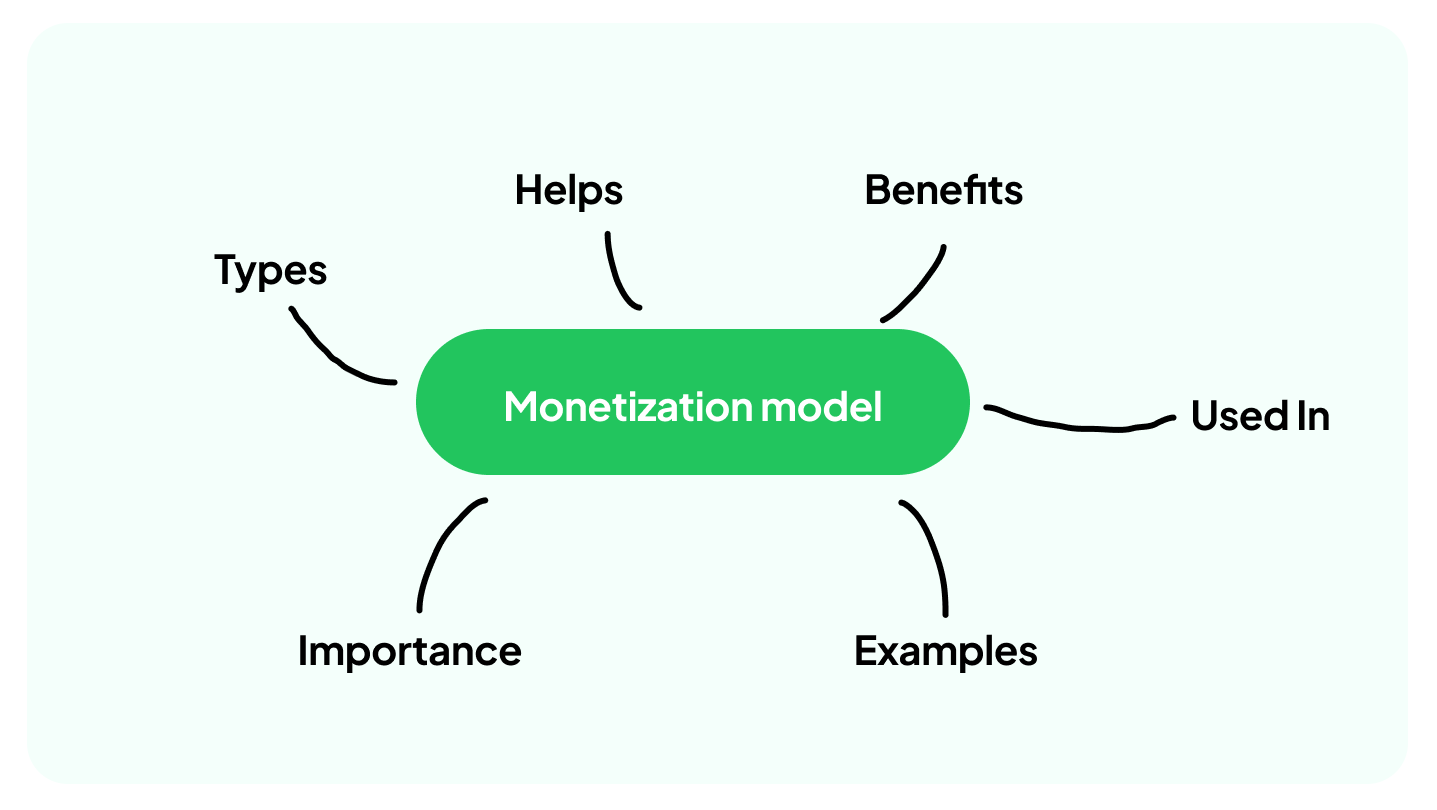What is your model of business?
How fair is your monetization model?
This is a question many investors and entrepreneurs ask us and probably the most essential question being asked by any investor in any startup pitch.
It’s that fine balance that needs to be achieved in order to have a successful business.
How much do I take from my client and how much do I give in return?
But is the client the only one I have to give something to? Well, no.
The problem with this question is that it never defines what “success” looks like and what is the real world cost for that success. You have to ask yourself, where do you draw the line, at a ~$1K monthly profit or at a ~$1 Billion monthly profit? Because the more you reach, the more your greed will destroy the balance of society and the biosphere if you don’t also give back. We are very lucky that some give back from what they took, otherwise we would be already extinct.
Continue reading to discover a new Web 3 model of business that was not possible until now.
No matter how much time and effort it takes and how many people contributed to the “success” of a business and how much did society and the biosphere had to pay for it, it seems to me it’s very hard for people to draw this line, it’s hard as long as we don’t take into account that we live in an indivisible biosphere, that we have limited “natural resources” and that we also have a responsibility to give back what we have taken.
“Nobody makes a million. They all take a million.” - Unknown
That million is energy that was invested by a lot of people. We will talk more about this in a future article. About what money really is and how can we make more of it. But for now, let’s continue our analysis of modern web monetization models.
Web 2 Monetization models
Let’s see which are the most used monetization models for web apps and web platforms. The models used can vary widely depending on the type of service, target audience, and the goals of the business. Here are some of the most popular monetization models:
Advertising: This is one of the most common ways to monetize web apps and platforms. You can display ads to users and earn revenue based on impressions (CPM), clicks (CPC), or other engagement metrics (e.g., CPA - cost per acquisition). Popular advertising platforms include Google AdSense and affiliate marketing programs.
Freemium: Offer a basic version of your web app for free and charge users for premium features or additional functionality. This model is popular because it allows you to attract a wide user base and convert a portion of them into paying customers. Examples include Dropbox and Spotify.
Subscription: Charge users a recurring fee (monthly, annually, etc.) to access your web app or platform. This model often works well for services that provide ongoing value, such as streaming content (Netflix), software (Adobe Creative Cloud), or premium content (The New York Times).
One-time Purchase: Users pay a single upfront fee to access your web app or platform. This model is common for software products, plugins, and digital goods like ebooks or templates.
In-App Purchases (IAP): If you have a mobile app or a web app with mobile features, you can monetize through in-app purchases. Users can buy virtual goods, premium content, or upgrades within the app. This model is prevalent in mobile games and apps like Tinder and Candy Crush.
Affiliate Marketing: Promote products or services related to your web app or platform and earn a commission on sales generated through your referrals. Affiliate marketing can be integrated into content, newsletters, or specific sections of your app.
Sponsorships and Partnerships: Collaborate with other businesses or brands to promote their products or services to your user base. This can include sponsored content, co-branded features, or exclusive partnerships.
Data Monetization: If your platform collects valuable user data (while adhering to privacy regulations), you can monetize that data by selling it to third parties for market research, advertising targeting, or other purposes.
Marketplace Fees: If your platform serves as a marketplace connecting buyers and sellers, you can charge transaction fees or commissions on successful transactions. Examples include Etsy and Airbnb.
Crowdfunding: You can use platforms like Patreon or Kickstarter to generate revenue by allowing users to support your project or content creation on an ongoing or one-time basis.
Donations and Tip Jars: Some web apps and content creators rely on user donations or tip jars to generate income. This model is common for blogs, podcasts, and open-source software.
Licensing and White Labeling: If your web app or platform offers valuable technology or tools, you can license it to other businesses or allow them to white label and resell your solution.
Event Ticketing: If your platform is related to events or entertainment, you can charge users for event ticket sales or bookings.
Consulting and Services: Use your web platform to showcase your expertise, and offer consulting, training, or other professional services related to your niche.
Content Subscriptions: Create premium content or a gated section of your platform that users can access by paying for a subscription. This model is popular for news websites and educational platforms.
Choosing the right monetization model depends on your target audience, the value you provide, and your business goals. Many successful businesses combine multiple monetization strategies to diversify their revenue streams. It's essential to keep user experience and ethical considerations in mind when implementing any of these models. Otherwise, we arise at the next issue…
Users as products
We believe that, unless we are talking about open source… if you do not pay for the product, you are the product. Same goes for services.
For example, Web 2 media, or what they call “Social” Media is attracting users by offering free access to their platform/app, but is it really free?
In these big social media apps, the user is exploited in all ways possible. He is spied upon, his choices and preferences are being recorded, the digital content he produces is not owned by him, but by the platform, and not to mention the aggressive advertising and scams he has to put up with. We will write another article on this that reveals how much time humanity is wasting on these platforms, you will not believe the numbers, they are beyond astronomical.
Scalability
Sometimes, you don’t know how to monetize your service or app, or the monetization model you chose is not right for your service or product and it limits your user/customer experience, ergo limits growth or traction. Even though Web 2 monetization models have not grown in numbers since many years, slowly - there are new models coming up with the decentralization trend that Web 3 promises.
Work for each other, not for money
The question that Web 3 should address is how to decentralize ownership and therefore share any profit generated inside such a network/dApp uniformly inside of it, instead of the profit being siphoned outside of the network, to be wasted by the shareholders of the company on useless possessions like houses, yachts, expensive cars, etc. This Hollywood programmed greedy behavior is what will be the end of our species if it does not change for the better.
But in Web 3, this is our second chance after the Dot.Com bubble to start working for each other and not for money, not for the 1%. Especially not for corrupt money (fiat), a money system designed to enslave humans through debt/interest and hinder their progress.
We believe that for Web 3 people, profit or monetization is not the right way to get support from users. We need better decentralized models of business for Web 3.
Meet NPPoS - Non Profit Proof of Stake
One such example is a new model of business created by the Gratitude Token Team which they called NPPoS (Non Profit Proof of Stake).
NPPoS is a new method of allowing access to services which requires users to hold some tokens at the time of taking certain actions in such a dApp. The amount of tokens required are not consumed after any action. It’s like a share in a project. It supports the adoption and holding of tokens, making the token supply on the exchanges smaller and smaller, thus appreciating the token’s price. You can see it implemented for the first time in SHIELD the governing dApp created for the Gratitude Token World project.
NPPoS is a unique way to stake tokens and getting access to quality online services that would otherwise require a Web 2 monetization model from the ones we listed earlier.
With NPPoS, you can own a very dynamic stake in a project, offering a lot of wins for all parties. If you no longer need a specific service or product, you can sell or transfer your tokens from your account at any time. So in essence, such a service is eventually free for the end user and if the token price appreciates the user has made a profit from owning such tokens and since active users have to own some tokens, the supply and the price of a token can be regulated by this mechanism.
For example, you will be able to stake tokens in such a dApp and become a member for 6 or 12 months, having a say in governing the dApp.
The NPPoS protocol is revolutionary in blockchain and crypto currency projects because it creates a very powerful incentive for the acquisition of users while helping the price of an associated crypto currency appreciate.
Read the full white paper for the Gratitude Token World project here: https://docs.gratitudetoken.world
Join the Movement!
Are you ready to be at the forefront of the digital revolution? Subscribe to our newsletter and become a part of the Web 3 Ambassadors community! Stay informed about the latest insights, innovations, and trends shaping the decentralized future.
But why keep all this transformative knowledge to yourself? Share this edition with at least one friend, and let's expand the circle of Web 3 Ambassadors. Together, we can empower more individuals to embrace the potential of Web 3.0 and shape a more decentralized, inclusive digital landscape.
Subscribe now and spread the vision of a Web 3 future!
Write for Web 3 Ambassadors
If you like writing about web 3, decentralization, blockchain, crypto, open source software and new fairer models of business, and you want your articles published in our blog, get in touch with us at [email protected]




